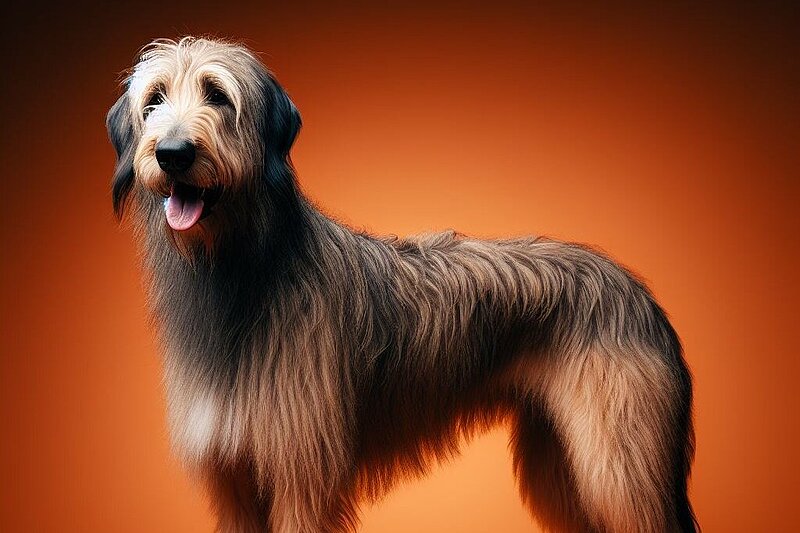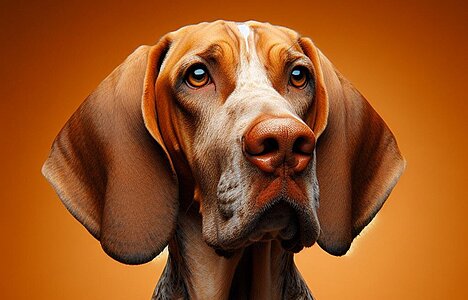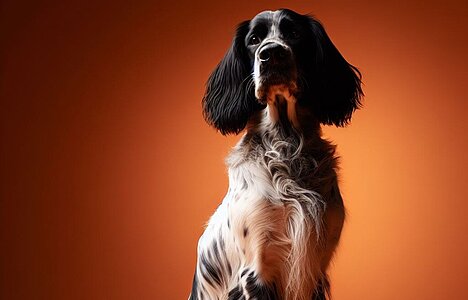Irish Wolfhound: A gentle giant with a history
History of the Irish Wolfhound
The history of the Irish Wolfhound goes far back into antiquity. Large Irish dogs were reported as early as the 4th century BC. They were originally bred to hunt wolves and other large game animals, hence their name. In the Middle Ages, they were highly prized at European courts and were often given as gifts to kings and nobles. Unfortunately, their use for wolf hunting in the 18th century almost led to the extinction of wolves and thus to the decline of the breed. Thanks to dedicated breeders such as Captain George Augustus Graham, the breed was revived in the 19th century.
Who is the Irish Wolfhound suitable for?
The Irish Wolfhound is an ideal companion for people who have a lot of space and time. Due to its size, it needs a large house with a garden where it can move freely. Families with children will find him a patient and gentle friend, but due to his size you should always have a supervisor with you. The Irish Wolfhound is also suitable for single people looking for a loyal companion.
Character of the Irish Wolfhound
Despite its imposing appearance, the Irish Wolfhound is known for its gentle and friendly character. It is very affectionate, patient and loyal. These dogs are generally calm and not very aggressive, which makes them ideal family dogs. They are intelligent and eager to learn, but require loving and consistent training.
Appearance of the Irish Wolfhound
The Irish Wolfhound is one of the largest dog breeds in the world. Males can reach a shoulder height of up to 86 cm, females up to 81 cm. Their weight is between 40 and 55 kg. Their coat is rough and hard, usually in colors such as grey, brindle, red, black, pure white or fawn. Their strong build and long legs give them a majestic appearance.
Care of the Irish Wolfhound
Grooming an Irish Wolfhound requires regular attention. Their rough coat should be brushed at least once a week to prevent matting. An occasional bath is enough to keep them clean. Due to their size, it is important to take care of their joints and provide them with a balanced diet specifically designed for large dog breeds.
Health of the Irish Wolfhound
Unfortunately, the Irish Wolfhound is prone to some health problems. These include heart disease such as dilated cardiomyopathy, hip dysplasia and gastric torsion. Regular veterinary examinations are therefore essential. Unfortunately, life expectancy is only around 6-8 years, which is typical for many large breeds.
Exercise and exercise
Irish Wolfhounds need plenty of exercise to stay healthy and happy. Long walks and enough room to run are essential. However, they are not dogs for long jogs. Although they need a lot of space, they can also live in a city apartment as long as they get enough exercise.
Training recommendations
Training an Irish Wolfhound should start early. Positive reinforcement and gentle consistency are the keys to a well-behaved dog. Socialization is particularly important to ensure that the dog gets along well with other animals and people.
Behavior with children and other animals
Irish Wolfhounds are known for their patience and friendliness with children. They are gentle and rarely aggressive. Nevertheless, you should always be careful, as their size can lead to unintentional accidents. They generally get along well with other pets, especially if they have been socialized at an early age.
FCI recognition and other information worth knowing
The Irish Wolfhound is recognized by the Fédération Cynologique Internationale (FCI) and belongs to Group 10, the sighthounds. This recognition underlines the importance and the standards that apply to this breed.
Information
Alternative Names
Country of origin
Appearance
Height at withers
Weight
Life expectancy
Breeding
FCI-Group
Standard
Section
More pictures
Similar to Irish Wolfhound
These dog breeds look similar to the Irish Wolfhound or resemble it in character.




